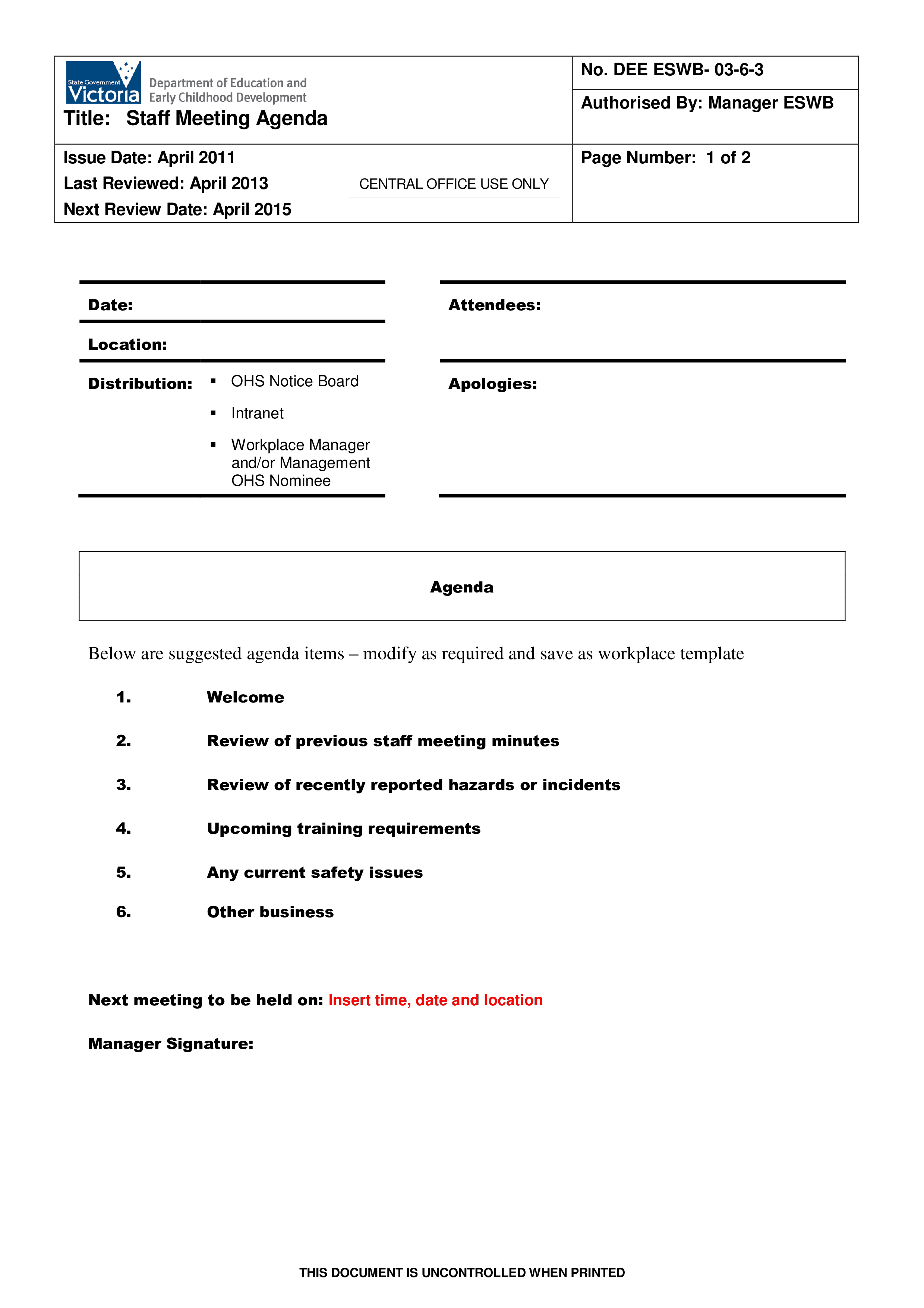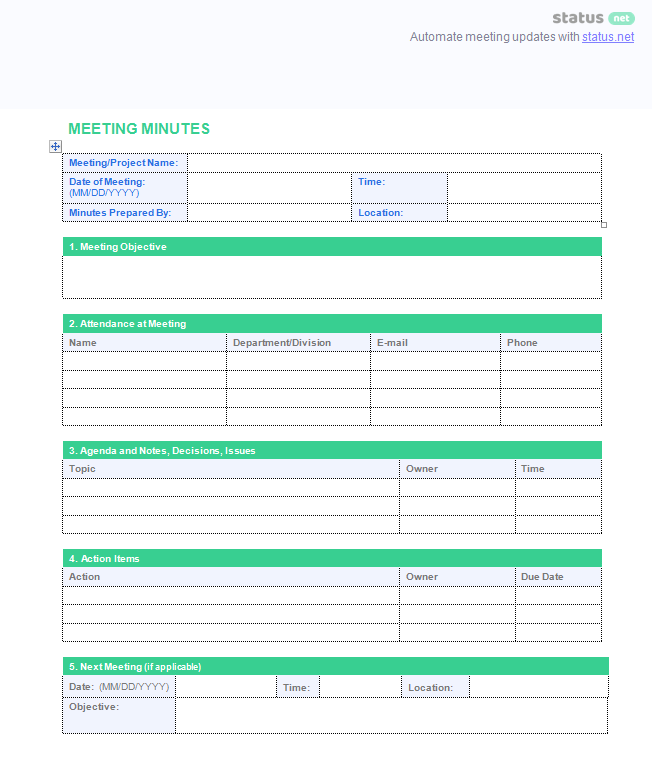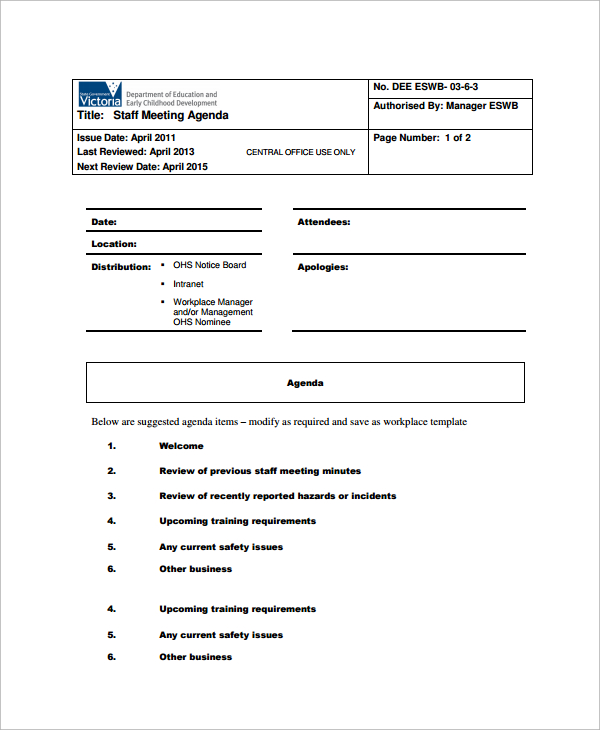
The way you manage when surrounding conditions are good, is not When it comes to managing, you need more than one approach #4 Tangible: The meeting agenda must be produced in a tangible, useable format, forĭistribution to all participants in advance of the scheduled meeting date. Time required to realize desired meeting goals. Agendas must alsoīe properly structured considering the time available for the meeting and the Orderly fashion - one that makes sense and provides clarity. Present required information, and conduct related discussions in a logical, #3 Organized: The agenda must be properly organized to meet designated objectives, Neither productive or actionable to plan a 3 hour agenda when #2 Realistic: The agenda must be achievable, considering the meeting purpose, timeĪvailable, participants and overall project status. Information is conveyed and that appropriate discussion can take place.

Make one or more decisions, the agenda must be crafted to ensure that all required

#1 Relevant: The agenda must be sufficiently relevant to and aligned with theĮstablished meeting purpose For example, if the purpose of the meeting is to Oriented, as defined by the following four (4) characteristics: So what makes an agenda actionable? To be considered trulyĪctionable (capable of achieving pre-planned objectives with minimal overheadīurdens), meeting agendas must be purpose driven, reality based and results Issues to be addressed, organized into a logical sequence, suited for discussionĪnd/or presentation, and carried out in a set period of time. Agendas establish the topics to be covered and Is a meeting agenda”? At the broadest level, meeting agendas are roadmaps for #4 Organize agenda items into an executable, time-bound meeting structure.īefore that question can be answered, you must step back and ask “what #3 Translate identified requirements into actionable agenda items. #2 Identify meeting requirements by defining meeting scope and purpose. #1 Set appropriate goals for meeting planning and related results. Productive meetings is to employ a standardized process for meeting planning andĪgenda development – one that breaks the effort down into “building blocks” thatĬan be readily adapted and applied. As can be expected, the best way to ensure “actionable agendas” and In other words, non productive meetings are something to avoid. Lack of preparation, and a lack of participant engagement. Or take more time than should be necessary considering the results produced.įurther, non-productive meetings are often characterized by conflict, confusion, Productive meetings are generally those that either fail to produce a meaningful result, On the flip side, what makes a meeting less than productive? Non Must be an effective use of everyone's time.

Must be necessary, it must serve a purpose, it must deliver a result, and it Labels aside, what makes a meeting “productive”? To be called productive, a meeting Getting Started: A Template for Productivity

you have to make them happen - using strategic thinking, proactive Meeting that makes good use of time? Answer: An actionableĪgenda that is simultaneously relevant, realistic, organized and Question: What’s the difference between a meeting that just


 0 kommentar(er)
0 kommentar(er)
